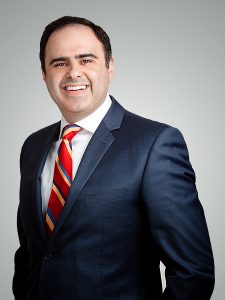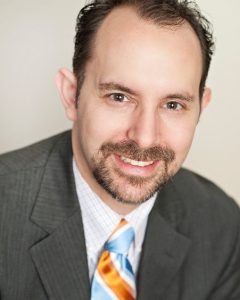Best Practices for Monitoring Your Securities Portfolio
As fiduciaries, institutional investors have a responsibility to monitor their investment portfolios, protect and maximize their assets, and ensure that no money that should have been awarded to their funds is left unclaimed. If investment funds are lost due to fraud or mismanagement, the trustees and management are responsible for using their best efforts to reclaim those assets. Indeed, institutional investors play a critical role in policing the securities markets through securities litigation.
But just like personal habits such as exercise, healthy eating, and saving, the act of monitoring, tracking, and understanding the legal ramifications affecting an investment portfolio can be a complicated, time-consuming, and daunting task for even the most sophisticated institutional investors. In fact, every year millions of dollars recovered in securities class actions are left unclaimed by investors.
What can be done to ensure that your institution is not leaving money behind in unclaimed awards? How do you ensure that your beneficiaries’ or customers’ interests are represented, and you are exercising the best possible portfolio monitoring practices? And most importantly, how do you do this with the limited resources, time, information, and experience at your disposal?
The answer is to implement best practices. Best practices are the equivalent of compound interest. The same way that money multiplies through compound interest, the effects of best practices multiply as you repeat them. They seem to make little difference on any given day and yet the impact over months and years can be enormous. It is only when looking back two, five, or perhaps ten years later that the value of good habits and the cost of bad ones becomes strikingly apparent.
The following ten items form the best portfolio monitoring practices for limiting unclaimed funds and helping trustees and management carry out their fiduciary responsibilities:
1. Implement a Securities Litigation Policy
Imitation is the sincerest form of flattery, and it is no exception when it comes to creating a securities litigation policy for your institution. While there is no “one size fits all” policy, you do not need to reinvent the wheel. Peer institutions often have their policy available online and trade groups such as GFOA, NCCMP, or NAPPA are also excellent resources for sample policies.
2. Solicit Monitoring Firms Through Requests For Proposals
The retention of outside firms provides an efficient and economically prudent means of monitoring investment portfolios, which identify and inform funds of portfolio losses due to mismanagement or fraud, provide advice on the appropriate action to take, monitor securities actions impacting funds, and file claims in settled matters.
The RFP process is an effective tool for selecting outside counsel best suited to meet your institution’s needs. You need a clear understanding of the goals of the RFP process, the needs of your institution, and the services you require. Specific information from interested firms should be requested so that you can analyze the monitoring tools and procedures offered by various firms. Outside counsel and consultants can be very helpful in the preparation and review of the RFPs.
3. Monitoring Agreements Should Be Non-Exclusive
A portfolio monitoring agreement should not be exclusive to any one firm. Rather, advice from multiple firms provides your institution with a range of viewpoints. With the threat of competition among firms, the risk of receiving poor or self-interested legal advice is mitigated. Further, if your institution decides to take legal action, multiple firms are forced to compete on price, resulting in the best deal for your institution.
4. Maintain Independent Decision-Making
Decision-making authority should always belong to your institution and demonstrates that your institution is informed, actively engaged, and that the advice received from outside counsel is disinterested and not frivolous. While your institution may seek advice from counsel, it is ultimately the institution’s decision as to whether to bring legal action, or any other action, in response to fraud or mismanagement that has been detected in your portfolio’s investments. In such instances, the determination of who to retain should solely be left to your institution.
5. Focus on Technology
Much attention is focused on the lawyering and advice, but often overlooked is the technology necessary to be applied by monitoring firms in order to provide such advice. A monitoring platform must be able to accurately identify eligible losses and potential claims before filing deadlines. Easily navigable monitoring platforms with technological innovations can save time and simplify the decision-making process for institutions to evaluate their legal options. Be sure to inquire about technology and, where possible, include technically savvy team members in the inquiry process.
6. Receive Regular Updates From Monitoring Firms
Your institution should receive regular updates from monitoring firms that includes relevant information about your institution’s portfolio, including investment losses, the cause(s) of any such losses, potential claims, and legal options available. Understandability and customization options can be key differentiators between firms or platforms.
7. Actively Monitor Your Investment Portfolio
While firms provide monitoring services and updates on your investment portfolio, it is also important to remain actively and directly involved in the monitoring process. Your institution should have direct access to the platforms used by any monitoring firms that have been retained. Direct monitoring enables your institution to remain informed and track ongoing litigation that impacts your investments. Ease of access and the contents of such platforms should be explored during the RFP process. Technology is a great differentiator between monitoring firms. Seek to retain the firm offering the best technology platform – it will result in more accurate information, transparency to the institution, and over time higher recoveries to the institution.
8. Track Settlements To Determine Eligibility
Millions of dollars from class action settlements remain unclaimed every year. To ensure your institution is not foregoing settlement money, a designated person or entity (such as monitoring firms) should monitor all settlements, regardless of whether your institution is a party to the lawsuit. This ensures that your institution is made aware of any settlements impacting it, has time to consider all options in response (including to opt out or file a claim), and allows you to respond in a timely fashion to meet all eligibility requirements and deadlines. The institution will be leaving money on the table if it cannot accurately determine how much it lost, filing deadlines, or if other information slips through the cracks.
9. Designate a Person or Entity to Handle Proof of Claims
The submission of proof of claim forms must meet strict deadlines and requires documentary evidence to support your claim. Understanding the intricacies of the claims process and submitting the appropriate forms takes time and expertise. The best practice for avoiding forfeiture of eligible claims is to designate a person or entity (such as a monitoring firm) to handle the submission of all proof of claim forms on behalf of your institution.
10. Maintain Accurate Records
Accurate and accessible documentation on your purchasing and trading histories for securities owned or previously owned assists in determining your institution’s eligibility in settlements. Given settlement notices may not be sent until years after the initiation of litigation, documentation must be held and maintained long periods in order to submit valid claims. A robust monitoring platform should be able to maintain these records.
Co-Authored by:
 Eduard Korsinsky, Esq.
Eduard Korsinsky, Esq.
Managing Partner, Co-Founder
Levi & Korsinsky LLP / CORE Monitoring Systems LLC
Eduard Korsinsky is the Managing Partner and Co-Founder of Levi & Korsinsky LLP, a national securities firm that has recovered billions of dollars for investors since its formation in 2003. For more than 24 years Mr. Korsinsky has represented investors and institutional shareholders in complex securities matters. He has achieved significant recoveries for stockholders, including a $79 million recovery for investors of E-Trade Financial Corporation and a payment ladder indemnifying investors of Google, Inc. up to $8 billion in losses on a ground-breaking corporate governance case. His firm serves as lead counsel in some of the largest securities matters involving Tesla, US Steel, Kraft Heinz and others. He has been named a New York “Super Lawyer” by Thomson Reuters and is recognized as one of the country’s leading practitioners in class action and derivative matters.
Mr. Korsinsky is also a founder of CORE Monitoring Systems LLC, a technology platform designed to assist institutional clients more effectively monitor their investment portfolios and maximize recoveries on securities litigation.
Mr. Korsinsky received his LL.M. Master of Law(s) from New York University School of Law in 1997 and his J.D. from Brooklyn Law School in 1995.
 Adam T. Savett, Esq.
Adam T. Savett, Esq.
Director of Communications and Institutional Research
Levi & Korsinsky LLP / CORE Monitoring Systems LLC
Adam Savett oversees Communications and Institutional Research for both Levi & Korsinsky LLP and CORE Monitoring Systems LLC. For more than 20 years, Adam has represented and advised some of the largest and most sophisticated institutional investors, government entities, individuals, and businesses in securities, antitrust, consumer protection, and other complex litigation.
Adam is a nationally recognized expert on complex litigation, class actions, and settlement claims filing. He is a frequent speaker, author, and commentator on class actions and securities litigation, and his comments have appeared in a wide variety of publications, such as The New York Times, Wall Street Journal, CFO Magazine, and Pensions & Investments.
Adam was previously named one of the 100 Lawyers You Need to Know in Securities Litigation by Lawdragon Magazine and has been an invited speaker before numerous industry groups, including the Federal Judicial Center (FJC), Bank Depository Users Group (BDUG), Association of Global Custodians (AGC), and SIFMA’s Global Corporate Actions Forum.
Levi & Korsinsky LLP + Core Monitoring Systems LLC
Levi & Korsinsky LLP is one of the nation’s leading plaintiffs’ law firms with over 200 years of combined partner experience litigating complex securities actions. Our 40+ lawyers, backed by a 25+ person support staff, have successfully litigated high-stakes, bet-the-company cases, in both federal and state courts throughout the country. At Levi & Korsinsky we combine securities expertise with innovative approaches to litigation and an enduring commitment to recover maximum compensation for our clients. Our attorneys are supported by a team of experienced professionals including financial experts, as well as a cutting-edge, proprietary e-discovery system designed to tackle the discovery needs of any given litigation.
Our firm provides a seamless end-to-end asset protection and recovery solution, all in one central location, including the following services: (i) portfolio monitoring; (ii) U.S. securities litigation evaluation; (iii) non-U.S. securities litigation evaluation; and (iv) settlement claims filing. Using the Firm’s “CORE” Proprietary technology platform, we offer institutional investors a comprehensive, real-time assessment of portfolio litigation exposure expressly designed to maximize return on portfolio litigation opportunities, with unprecedented ease of use and transparency. All done with No Out-Of-Pocket Costs to the institution. For more information about the Firm or schedule a CORE demonstration, go to www.zlk.com & www.compensationrecovery.com.
For more information or to schedule a CORE demonstration or learn more about our firm please contact:
Points of Contact details:
Doug Borths
Director of Institutional Client Services & Marketing
Levi & Korsinsky LLP / CORE Monitoring Services LLC
55 Broadway, 10th Floor
New York, NY 10006
Tel.: (212) 363-7500 ext. 166
Direct: (407) 965-5748
Cell: (319) 573-2604
dborths@zlk.com | http://www.compensationrecovery.com | http://www.zlk.com
Adam T. Savett
Director of Communications & Institutional Research
Levi & Korsinsky LLP / CORE Monitoring Services LLC
55 Broadway, 10th Floor
New York, NY 10006
Tel.: (212) 363-7500
Cell: (216) 406-0278
Fax: (212) 363-7171
atsavett@zlk.com | http://www.compensationrecovery.com | http://www.zlk.com
OFFICE Locations
New York
Connecticut
Washington, D.C.
California
Awards
